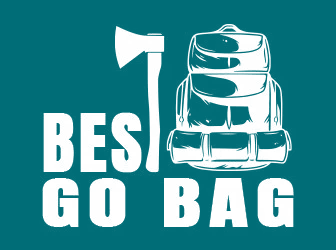There are many challenges when it comes to killing bacteria. First and foremost is the fact that we can’t see them. A microscope is needed to observe bacteria.
And second, not all bacteria are bad. Some are harmless, while some are actually good for our bodies. You don’t want to throw out the baby with the bathwater.
But there are plenty of harmful bacteria. They are pathogenic, causing disease in the human body.
The key is to learn how to kill bad bacteria. This will help us avoid some harmful infections and also help prevent food from spoiling. Fortunately, there are a number of ways to do this. Including some that may seem a tad unusual.
Boil water to destroy germs
The most common way to rid water of bacteria is by boiling it. Humans have been doing this since the time of the ancient Greeks. And probably earlier.
It’s very likely your community has had a boil order at one time or another. They usually follow a contamination or possible contamination of the water supply. This can occur after an extreme weather event or a pipe or water main break.
Boiling water for about 10 minutes won’t eliminate heavy metals and some other contaminants. But it usually does a good job of destroying pathogenic microorganisms such as bacteria.
Heat can destroy bacteria cells in water. It does this by damaging the structure of the cell’s proteins, altering the cell’s metabolic processes and striking its nucleus.
High temperatures do the trick
High temperatures can also kill bacteria on some solid objects. Assuming those items won’t melt from the heat. That’s how scalpels, needles and other medical instruments are made safe to use on patients.
Warm temperatures can actually help bacteria grow, but each microorganism has a temperature limit. Once that limit is reached, the bacteria die. High heat combined with high moisture is one of the most effective methods of killing microorganisms.
You might not think about it much, but you probably use heat to get rid of bacteria nearly every day. In fact, each time you load up and turn on your dishwasher, that’s what you’re doing.
In addition to the washing of dishes, glasses, silverware and other kitchenware, the heat cycle is designed to get rid of any remaining bacteria. As well as to dry the items.
Chemical disinfectants work too
Another way to kill bacteria, viruses and other germs is through chemical disinfectants. They work by breaking down a pathogen’s protective cell wall and exposing its fragile interior.
One of these disinfectants is alcohol. For example, a 70 percent ethyl alcohol solution is often used on a cotton swab to rub on an arm prior to an injection or blood draw to help prevent infection.
Iodine is another chemical disinfectant. It’s known to be effective against a variety of bacteria. Including spores, fungi and viruses. It can disinfect a wound before bandaging and disinfect contaminated water. It can also sanitize food utensils.
Chlorine is used in water treatment, as well as in the food and medical industries. It can disinfect wounds and sanitize eating utensils.
Detergents work to disinfect clothes, dishes and other items by enmeshing bacteria in its lather. The lather is then removed by rinsing with water. Dryers add even more heat.
Think out of the box
I promised you a few unusual ways to kill bacteria. Of course, they’re only unusual if you’ve never used them before. But here goes…
Microwave your sponge. In a recent communication I told you about a study that ranked a dish sponge as the “germiest” item in a home. The Agricultural Research Service says this breeding ground for bacteria including E. coli can be disinfected by the heat in a microwave oven. Just make sure to wet the sponge first.
Avoid restroom hand dryers. This is more of a “don’t” than a “do,” but I’ll add a “do” to it. A study from the University of Connecticut and Quinnipiac University showed that hot-air dryers do more harm than good. Yes, they’ll dry your hands, but they are “bacteria bombs.” They send spores onto your hands and into the air. You’re much better off drying your hands with a disposable towel.
Open your blinds. Say what? Yes, the sunlight streaming through a window can help kill bacteria. University of Oregon researchers built climate-controlled miniature rooms for an experiment. Results after three months showed that rooms with sunlight and ultraviolet (UV) light had about one-half of the bacteria that dark rooms had. Artificial UV light worked even better than sunlight.
UV-C light attacks bacteria
All the disinfecting and sanitizing methods mentioned above work, although they require some physical effort on your part.
Wouldn’t it be nice if you could just wave a magic wand over a surface and have the bacteria go away?
Well, in reality, there’s nothing magical about it. That is, if your wand features germ-killing UV-C light. In fact, UV-C light can kill up to 99.9 percent of viruses and bacteria.
And that’s important because invisible bacteria are all around you, all the time. Including on light switches, doorknobs, ATMs, gas pumps… you name it. And UV-C light works quickly. Often is as little as 30 seconds.
So, there are plenty of ways to kill bacteria. The important thing is to make sure you get rid of them before they attempt to ruin your day.


